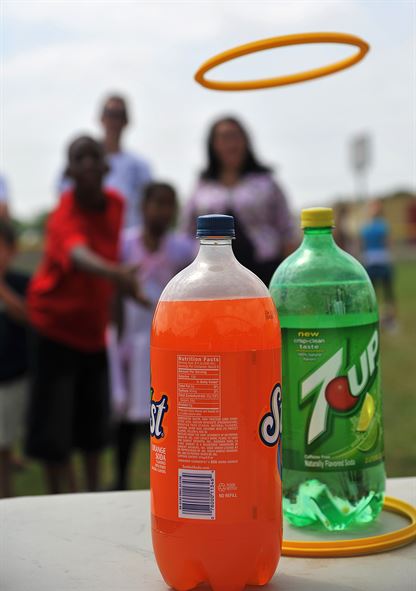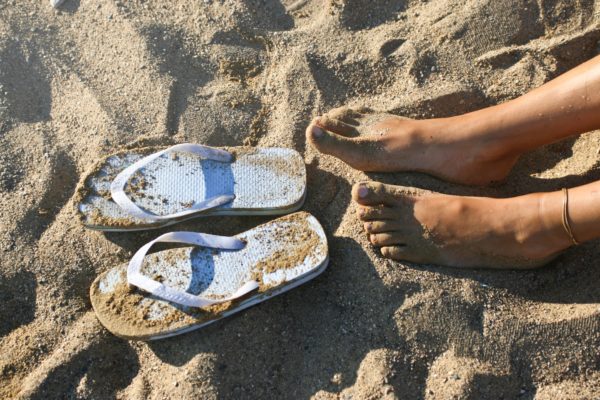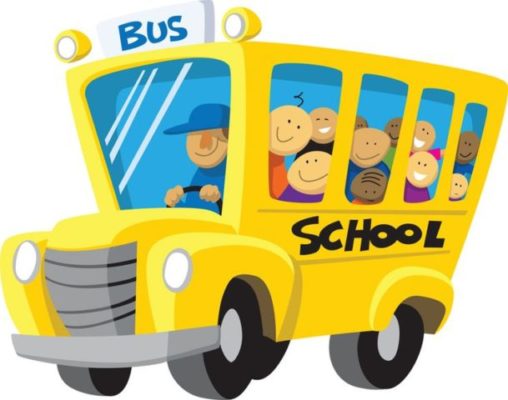6 Best Summer Math Activities: How to Stay Smart & Have Fun
Been thinking about some fun summer math activities to add into the day? Math games and activities shouldn’t be reserved for the classroom. In fact, you can have a ton of educational fun with your children over the summer break.
 Best of all? You don’t need to spend money on fancy games, all of these games can be created with objects you have lying around the house. The great things about these math games is that you can adapt them to any age group, meaning you can play the same game with the whole family!
Best of all? You don’t need to spend money on fancy games, all of these games can be created with objects you have lying around the house. The great things about these math games is that you can adapt them to any age group, meaning you can play the same game with the whole family!
Fun Summer Math Activities
1. Shape Twister
 The good thing about this game is that it has the potential to entertain children for hours. The game is played much like the traditional game of Twister, but uses basic mathematical shapes. You can prepare the game yourself or get children to help you (thus keeping them busy for even longer). This is how you do it:
The good thing about this game is that it has the potential to entertain children for hours. The game is played much like the traditional game of Twister, but uses basic mathematical shapes. You can prepare the game yourself or get children to help you (thus keeping them busy for even longer). This is how you do it:
- Draw large basic shapes on paper, colored or plain is fine – the focus is on shapes. You will need four of each of the six shapes (these can vary depending on knowledge, but some good ideas are square, circle, triangle, diamond, pentagon and rectangle).
- Arrange the pieces of paper together to create a playing surface.
- Create a spinning board. Using some strong cardboard, divide it into four sections (one for each hand and each foot).
- In each segment draw each shape. These must be in circle formation so the spinner can definitively point to a shape. Use another piece of strong cardboard to cut an arrow shape. Fasten it to the board at the center with a paper fastener.
- Play! Children take it in turns to play and to be the spinner. The spinner reads the instruction aloud for the players to follow, for example, ‘right hand on square’.
- The winner is the player who doesn’t fall over!
2. Memory Matching Game
Help children improve their recognition, matchmaking and memory skills with this homemade memory game. Start by taking some photos of various objects and people. Print out the photos, ensuring you have double of each image. Glue the photos onto card or have them laminated.
How to play:
- Shuffle the cards (the photos) and lay them face down in a grid pattern – no peeking!
- Players take it in turns to flip over two cards. If they match, they keep the pair and have another turn. If not, they flip the cards back over and it is the next player’s turn.
- Keep playing until all cards have been paired up and the player with the most pairs wins!
3. Bottle Toss
 This game is just like many games you see at carnivals!
This game is just like many games you see at carnivals!
- Collect a bunch of bottles and fill them with water to make them more stable. Write different numbers on each of the lids – vary these depending on your child’s ability and whether you are focusing on addition or multiplication.
- Cluster the bottles together and use plastic rings, perhaps bangles, to toss over the top of the bottles. Give children a challenge such as ‘add to 20’ or ‘multiply to 60’.
- Children aim at various numbers to create a successful equation.
- The first person to achieve the challenge wins!
4. Pitch, Hit and Graph
Enjoy the outdoors with your kids and have some educational fun! This activity is geared towards baseball, but you could adapt it to any sport you like. It can be played with any number of people, but the more people you have the more more data you will get, creating more graphing options. This makes a great challenge for older children.
- Set up distance targets and pitch the ball to your kid. For each hit, record the distance using pen and paper.
- Convert the data to a graph – try line graphs, bar graphs and pie charts.
- Don’t forget to have your child pitch to you and record you scores!
5. Mathematical Tic-Tac-Toe
 Turn this classic game into a educational math activity.
Turn this classic game into a educational math activity.
- Use nine squares of paper for the tic-tac-toe grid. Write several math problems or equations on the squares and arrange in a grid pattern face down.
- Each player has their own small stack of cards, or paper, with either an ‘X’ or an ‘O’. They take it in turns to flip the paper in the grid, choose a problem and answer it. If answered correctly, they replace the piece of paper with their own, thus placing and ‘X’ or an ‘O’ in its place.
- The aim is to create three successful sheets in a row!
6. Playing Card Math
 Everyone has a deck of cards lying around, so dig them out and play this math game.
Everyone has a deck of cards lying around, so dig them out and play this math game.
- Remove the King, Queen, Jack and Joker cards, and explain that ace cards are equal to one.
- Shuffle the remaining cards and then place nine cards in a 3×3 grid pattern.
- Ask you child to look for any combination of cards that add up to a particular number. Once they have identified the cards remove them, and replace them with new cards from the pack. If no combinations are available, remove all nine and replace them. Keep playing until the deck is complete.
- For older children, give them a number and allow them to reach it using any way possible. For example, to reach six they might use 3×4-5-1 to get rid of as many cards as possible.
- Make it a two player game and have the children alternate turns, the person who collects the most cards is the winner.
Games are great ways to get kids working their brains, decreasing summer learning loss and staying on top of all that they learned in school. In addition, by playing some summer math activities together you accomplish a few things without anyone noticing. First, you’re having family or togetherness time. Secondly, you’re just having plain ‘ole fun! Remember that term? The older we get the more we forget it. 😉 And finally, Your kids are able to work on their math skills without realizing it. Finding practical applications and fun with a few of these summer math activities is a great and easy way to do it!

Enjoy All The Benefits
You don’t pay your first hour unless you find it a good fit.
Only pay for the time you need.
No subscriptions or upfront payments.
Find Tutors Near You And then what happens? Summer vacation. Around ten to twelve weeks of freedom, fun and no stress or pressure from school. Sure, kids need time to be kids and to enjoy their childhood, but summer learning loss can cause real problems upon the return to school. What is even more problematic is the divide that summer learning loss can create between children.
And then what happens? Summer vacation. Around ten to twelve weeks of freedom, fun and no stress or pressure from school. Sure, kids need time to be kids and to enjoy their childhood, but summer learning loss can cause real problems upon the return to school. What is even more problematic is the divide that summer learning loss can create between children. Every child is at risk of experiencing summer learning loss. There are, of course, a small percentage of children who attend regular summer school and similar programs, which significantly reduces any learning loss. Unfortunately, in general, children who come from lower income families tend to experience summer learning loss more than their wealthier counterparts.
Every child is at risk of experiencing summer learning loss. There are, of course, a small percentage of children who attend regular summer school and similar programs, which significantly reduces any learning loss. Unfortunately, in general, children who come from lower income families tend to experience summer learning loss more than their wealthier counterparts. Simply engaging children in conversation and spending quality time together can help reduce summer learning loss, but this can be difficult for single parents, those who work long hours and can’t afford time away from work, or those who, for a variety of reasons, have less than positive familial relationships. However, family doesn’t mean just blood relatives. Extended family and friends can all be a part of this as well. Kids learn from whomever is around, just give them the chance!
Simply engaging children in conversation and spending quality time together can help reduce summer learning loss, but this can be difficult for single parents, those who work long hours and can’t afford time away from work, or those who, for a variety of reasons, have less than positive familial relationships. However, family doesn’t mean just blood relatives. Extended family and friends can all be a part of this as well. Kids learn from whomever is around, just give them the chance! One of the best things children can do over the summer is read. Libraries are usually free to join and offer an abundance of books for children of all ages. Librarians are full of knowledge about books to help advise you on what might suit your child the best, and what might help them develop a love for reading. A child may be a hesitant reader simply because they haven’t found a style of book they enjoy.
One of the best things children can do over the summer is read. Libraries are usually free to join and offer an abundance of books for children of all ages. Librarians are full of knowledge about books to help advise you on what might suit your child the best, and what might help them develop a love for reading. A child may be a hesitant reader simply because they haven’t found a style of book they enjoy. The type of children that learn best at school are the ones that want to learn. You can make almost any activity a learning experience by encouraging conversation and asking your child questions. Hopefully, this will stimulate them to think about things and start a journey of curiosity and inquisitiveness. Try simple questions like these;
The type of children that learn best at school are the ones that want to learn. You can make almost any activity a learning experience by encouraging conversation and asking your child questions. Hopefully, this will stimulate them to think about things and start a journey of curiosity and inquisitiveness. Try simple questions like these; Most towns and cities have summer events and activities to get involved in or to explore. Summer concerts, art programs, STEM program (growing in popularity and availability), library or community center options are all free or near free to those residents in the community.
Most towns and cities have summer events and activities to get involved in or to explore. Summer concerts, art programs, STEM program (growing in popularity and availability), library or community center options are all free or near free to those residents in the community. For whatever reason, one of the best ways to learn how to study is by taking pen or pencil to paper and writing out anything and everything related to your coursework, text or exam. There’s something about that “flow” as I call it that makes your brain absorb and store what you are working on as well as learning at the time.
For whatever reason, one of the best ways to learn how to study is by taking pen or pencil to paper and writing out anything and everything related to your coursework, text or exam. There’s something about that “flow” as I call it that makes your brain absorb and store what you are working on as well as learning at the time. The activity for today is what I like to call “Adventure Trek: A Tutor Outdoor Activity for Elementary School Children”.
The activity for today is what I like to call “Adventure Trek: A Tutor Outdoor Activity for Elementary School Children”.